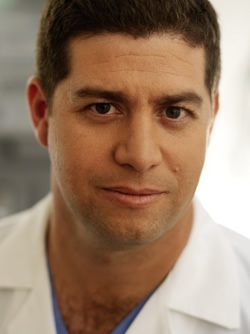Heart Valve Replaced via Artery at Cottage
Sansum Doctors Perform Successful and Novel Technique

Cottage Health proudly announced last week the success of a new technique to replace the aortic valve in elderly patients which avoids opening the chest walls. Transcatheter aortic valve replacement (TAVR) guides a collapsible valve through an artery and lodges it in the problem valve, pinning back the old leaflets as the new ones expand and resume letting blood out, but not back in. The procedure, a first in Santa Barbara, is being performed by a team led by Dr. Joseph Aragon, an interventional cardiologist at Sansum Clinic.
Aortic stenosis, a narrowing of the aortic valve that restricts blood flow and can sometimes lead to heart failure, is the most common valve disorder in older people, who are often too frail to undergo open-heart surgery, said Aragon. Once a patient has been evaluated and found to be able to take the transcatheter placement, an “entire village” works to perform the complex procedure, he said, and they’ve done one almost weekly since September.

Dr. Michael Shenoda is an interventional cardiologist on the team, Aragon explained, and the surgeon on the procedure is Dr. Donald Thomas. They rely on Dr. Colin Shafer for the echocardiogram via esophagus that helps guide the valve placement while the heart is visualized under X-ray. Other team members include surgical nurses and technicians, anesthesiologists, catheter lab techs, and nursing staff. “And at the heart of the entire program,” Aragon avowed, is Jillian Loewen, a nurse coordinator who “makes the whole machine run.” From the moment a patient is identified to coordinating follow up, Aragon credits Loewen with keeping the team and the patient informed and working cohesively.
The less-invasive TAVR procedure was first developed by Dr. Alain Cribier in 2002 at Hopital Charles Nicolle in Rouen, France, and the U.S. Food and Drug Administration allowed it in inoperable patients in 2011, and in 2012 for patients with high surgical risk. It’s an alternative to standard valve replacement techniques, which involve cutting through the breastbone to expose the heart and re-routing blood circulation through a heart-lung machine during surgery. The artery route used in TAVR usually improves recovery time significantly, although the procedure does have its share of risks, such as bleeding and loose bits of calcium.
Patients who have open-heart procedures can take several months to get back to baseline, Aragon explained. His patients who’ve had TAVR are able to leave the hospital in three to five days and are often back on their feet in about a week. One patient, 90-year-old Evelyn Alberts, was ready to leave the hospital the day of the procedure, Aragon recalled, laughing. “No. You have to stay at least one night!” he told her. Alberts — who was too high a risk for open-heart surgery and was dizzy and short of breath from her aortic stenosis — stayed for the requisite three days and told Cottage she feels she received a “second chance in life.”



